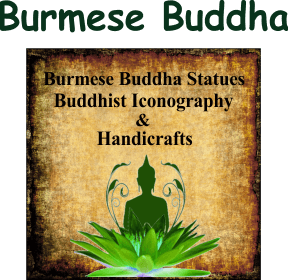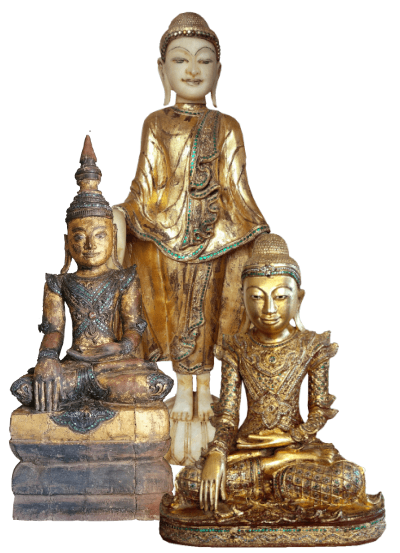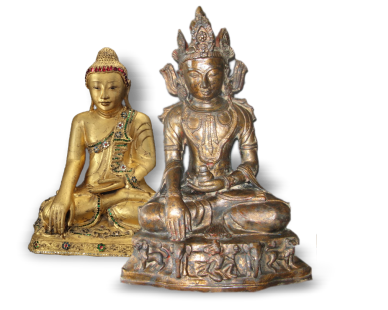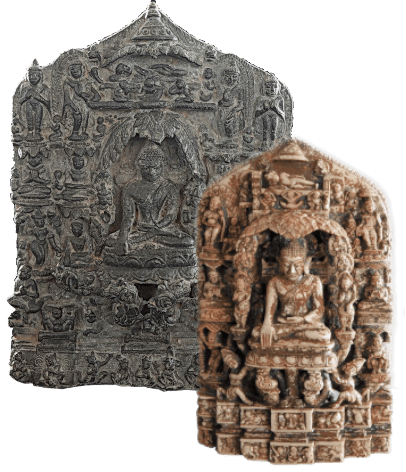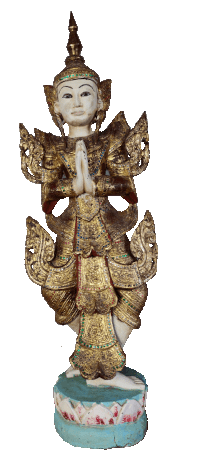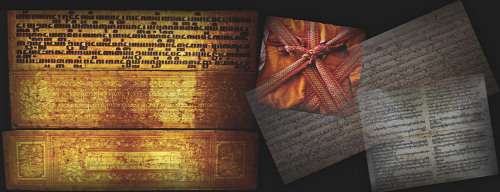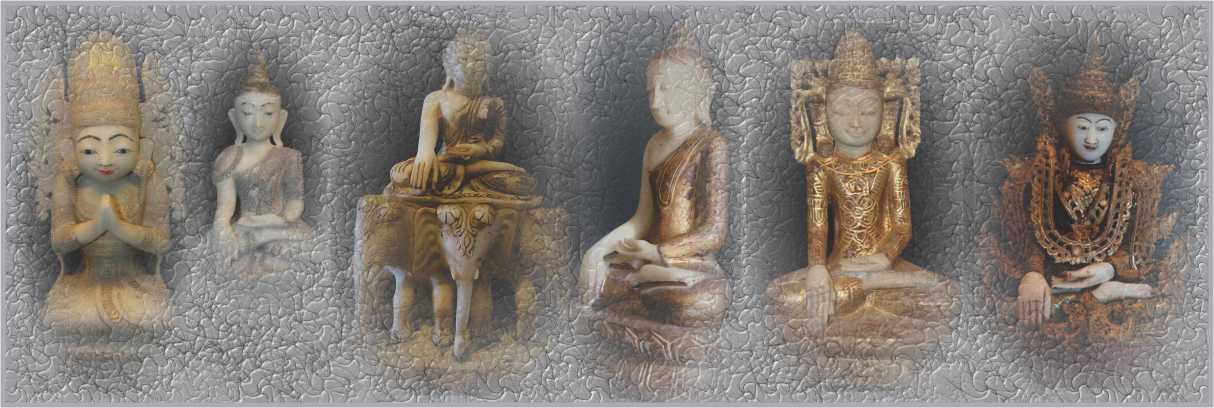Burmese Buddha Statues – Buddhist Iconography – Handicrafts
We are sellers of unique, rare, one-of-a-kind Burmese Buddha Statues, Buddhist Iconography and Handicrafts, based in Brisbane, Australia. Our collection includes Alabaster, marble, bronze, and hollow lacquer Buddha statues as well as some rare Buddhist iconography, antique Burmese handicrafts, antique Burmese Pali Buddhist palm leaf Manuscripts and gilded Kammavasa, and other Buddhist-related items originating from various parts of South East Asia.
Due to the high rate of Phishing and crank calls we do not provide our phone number on our site, however, we are happy to give these details to anyone with genuine and sincere inquiries through our contact page.
Antique Burmese Alabaster & Marble Buddha Statues
Our unique collection of Burmese Alabaster and marble Buddha Statues are examples of the artistic creativity of the Burmese artisan. Many of our most beautiful statues are made from alabaster, renowned for their distinctive characteristics and visual allure and a favoured mineral in the realms of art and architecture for hundreds of years the world over.
Alabaster is a fine-grained white or lightly tinted variety of gypsum, a pliable sulfate mineral consisting of calcium sulfate dihydrate, whereas marble is a metamorphic stone formed by subjecting limestone to heat or pressure.
Antique Burmese Wooden Buddha Statues
Burmese Wooden Buddha statues are among the most beautiful in the world. Teakwood has traditionally been used in sculpting Buddha statues, especially by the Shan people, one of the largest ethnic groups in the country and occupying the largest state in Myanmar (Shan State).
Many of our wood Buddha statues are antique, dating back to the Mandalay Period (1853-1885), Post Mandalay (1895-1948), or Ava style (18th-19th century) with a few older statues from Arakan in Rakhine State.
Antique Burmese Bronze Buddha Statues
Pantin is the art of bronze casting in Myanmar, which has a long history dating back to the Bronze Age. The first known casting of bronze Buddha statues dates back to the Pyu period followed by the Pagan, Ava, Shan and Konbaung dynasties. Each period has its distinctive style and influence.
The art of bronze casting is one of the ten forms of traditional arts and crafts in Myanmar, known as pan se myo (Ten Flowers). Apart from Buddha statues the Myanmar bronze casters use a mix of metals for various items such as gongs, bowls for monks, weights, copper pots, cup bowls, cymbals, and bells. Many of these items are used for religious, cultural and decorative purposes as well as tourism.
Burmese Hollow Lacquer Buddha Statues
Hollow lacquer Buddha statues are a traditional art form in Myanmar, especially among the Shan people. They are lightweight and portable. They are made by applying layers of lacquer sap mixed with cloth and sawdust over a clay core, which is then removed to create a hollow figure.
The Hollow lacquer-type Buddha statues are often gilded and decorated with glass mosaics and thayo lacquer floral decoration. Due to the intensive labour and length of time it took to make these lightweight Buddha statues they are considered rare and valuable, Some of the most famous examples of this technique can be found in the Inthein area near Inle Lake, where there are hundreds of ancient Buddha statues dating back to the 18th century. Production of Hollow Lacquer Buddha statues ceased at the turn of the 20th century, today some are being made using modern techniques, which are not so labour-intensive.
Rare Burmese Buddhist Iconography
One of the most distinctive aspects of Burmese Buddhism is its rare iconography, which reflects the historical and artistic influences of various periods. Some of the rarest and most remarkable examples of Burmese Buddhist iconography are:
- Andagu stone carvings are ancient reliefs that show scenes from the life of the Buddha and his previous incarnations. These carvings date back to the Pagan period 9th to 12th centuries.
- The bronze eight-scene stele is a metal plaque that depicts eight important events in the Buddha’s life, such as his birth, enlightenment, first sermon, and death. This Burmese bronze stele is dated to the Pagan period (11th to 13th centuries CE)., and is one of the few surviving examples of this type of iconography
These extremely rare pieces are valuable sources of information and inspiration for scholars, collectors, and admirers of Buddhist art.
Burmese Handicrafts - Monks - Nats - Deva
Burmese handicrafts are a reflection of the rich and diverse culture of Myanmar, where different ethnic groups have developed their own artistic traditions. Some of the most popular and distinctive handicrafts include lacquerware, wooden Nat carvings, Alters, tapestries, silk weaving, silverware, gemstones, lacquered monks offering bowls, and marionettes.
Handicrafts in Myanmar are made by skilled craftsmen from local materials and frequently feature motifs and patterns inspired by Buddhism, nature, and mythology. Burmese handicrafts are beautiful and unique they are complementary to any style of home decor and are frequently used in religious ceremonies and festivals in Burma.
Antique Buddhist Pali Manuscripts - Kammavaca - Palm Leaf
Burmese Buddhist manuscripts are a rich source of information on the religious and cultural history of Myanmar and its neighbouring regions. They are written on various materials, such as palm leaf, cloth, metal, ivory or paper, and can be decorated with lacquer, gold, silver or glass mosaics.
The most common type of Burmese Buddhist Pali manuscript is the kammavaca and palm leaf, which contains extracts from the monastic code of conduct (Vinaya). Kammavaca manuscripts are usually commissioned by lay people as meritorious gifts for monasteries, especially when a son enters the monkhood.
